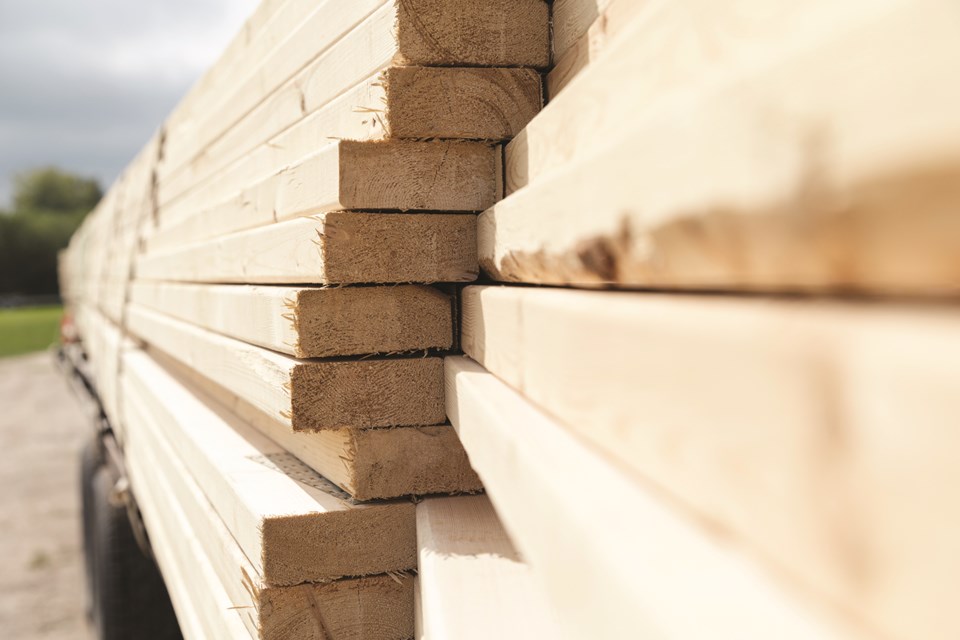LAKELAND - Residents are cutting back their lumber-related projects due to the current high cost of the product.
When COVID-19 first hit, homeowners flocked to their nearest lumber yard to stock up and check off items on their to-do lists. Unfortunately, due to a spike in lumber prices that momentum is fizzling out.
“People are looking at what projects they may have wanted to do this year. For example, one customer came in and had three different wood-related projects he wanted to do and he got pricing on all three separately and will now probably do one or two instead of all of them,” stated Jay Kolewaski, owner of RONA Cold Lake.
Greg Bouchard, owner of Lac La Biche Building Products agreed, “If they’re cautious and are just the normal working person who doesn’t have a whole lot of money leftover at the end of the month, they probably won’t be doing too much building."
Whether it's a large- or small-scale job, people are feeling the pinch.
“Unfortunately, a lot of people are not going to build because of the prices, they’re going to wait and see," stated Bouchard. “Others are biting the bullet and are building regardless."
However, he added, not everyone is in a situation where they can afford to build a house despite a $100,000 or more increase to the cost.
According to Kolewaski, lumber isn't the only thing driving up the prices.
“It’s not just lumber in itself that has gone up astronomically, it has gone up a lot, but every other product related to construction has climbed at least 30 per cent or more since January,” he explained. “So, when people are looking at houses and thinking ‘well they used to be $300,000 to $350,000 and now it’s close to $500,000.' It’s pretty easy when lumber has gone up 400 per cent and other products are 30 to 50 per cent up also."
Brock Mulligan, vice president of the Alberta Forest Products Association, believes when it comes to high demand and cost, there are positive and negative impacts.
Mulligan said a lot of other industries are currently struggling to get by, but in communities where there is forestry, the industry is doing well.
"That's giving these communities a lot of economic vitality in a time when some of the other sources are challenged," he continued.
This year, the forestry industry will pay roughly $350 million in royalties and taxes to the Government of Alberta, in addition to about $73 million in property taxes to municipalities, Mulligan outlined.
But what is behind what some in the industry are calling an "anomaly?"
Mulligan said there are a number of factors contributing to the high cost of lumber.
"The first is a really strong renovation and remodel sector across North America, and I think that's attributed to a lot of folks working from home and needing to carve out some space, or they're just spending more time at home and have decided to do some types of improvements," he outlined. "That's something we hadn't expected when COVID hit, but it has been a huge driver."
Bouchard agreed that when it comes to what's driving prices up, a lot of it has to do with demand.
“Lack of product, availability, and usually the summer months are busy with building, so it grows. The backlog of product is causing some of that and a super strong US housing market is probably the main cause of it," Kolewaski stated.
Mulligan agreed.
"The housing starts, especially in the United States, has continued to be strong, which is a bit of a surprise."
In addition to high demand, lack of supply has also been an ongoing issue, partially due to the presence of the Mountain Pine Beetle in British Columbia, which is considered one of the largest lumber distributors in North America.
Mulligan explained how this has caused a lot less wood to be available for mills "so they've had some mill closures over it," which in turn is impacting supply.
“Demand is probably the biggest thing, plus the fact that the restrictions of workers in the plants to get the product out, it’s just a double-whammy,” Bouchard added.
In some areas of the U.S., COVID has resulted in the temporary closure of lumber mills, Mulligan said, which also contributes to the supply problem.
Strong demand for product and lack of supply creates the perfect storm "that we're seeing right now," Mulligan added.
The issue with high prices, Bouchard noted, is some will turn to other countries to find the product at a more affordable price.
For example, he has heard some buyers are going to other countries such as China in order to buy their lumber. The issue with that, he explained, is the difference in standard.
“They have different quality controls than we do here in Canada,” exclaimed Bouchard.
Specifically referencing Oriented Strand Board (OSB), Bouchard said, “We don’t know what the quality of it is going to be like. People are going to buy it and build their houses with it and find out that the glue that holds the chips together is failing and their walls just start to fall apart."
Although Bouchard and Kolewaski aren't confident prices will start to level out in the near future, there is hope.
"I think if we look at historical trends, this is a definite anomaly. These prices are double and in some cases over double previous highs. When you look at that, is it likely to come down at some point? Yes, just because of how this relates to historical trends," expressed Mulligan.



